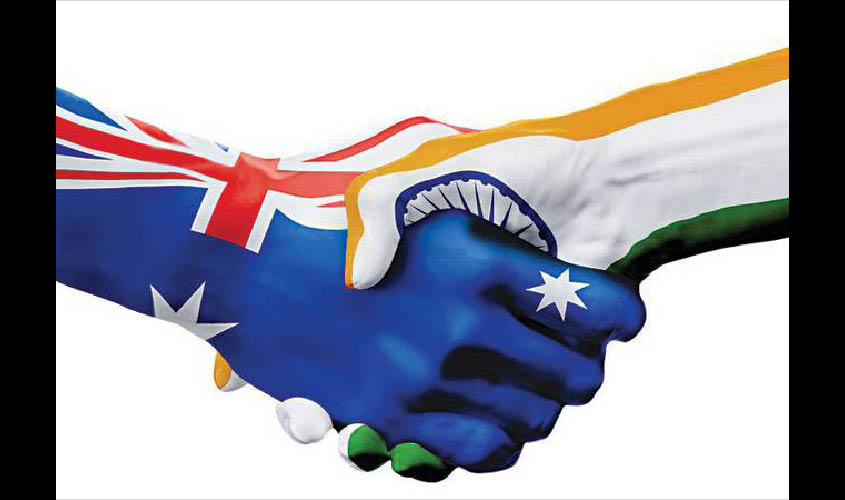Kovind’s visit to Australia highlighted the need for stronger bilateral ties.
Thanks to the Act East policy, India-Australia ties that had remained dormant through the Cold War years due to global geopolitical constraints, are on the upswing. Several commonalities such as the Commonwealth, Westminster system, cricket and English language, occasional high-level visits, and Australia’s support to India in latter’s wars including in 1962, could not bring enough warmth to the relations. Bilateral ties strengthened only during Phase II of the Look East policy (2002-2014) and further gathered momentum with “Act East”.
President Ram Nath Kovind recently concluded his state visit to Australia, the first-ever by an Indian President. His visit rallies with preceding high-octane visits by Tony Abbott and Narendra Modi (2014), Malcolm Turnbull (November 2017), and Governor General Cosgrove (March 2018). While Prime Minister Modi did meet the newly sworn-in Australian Prime Minister Scott Morrison on the sidelines of the 13th East Asia Summit, Kovind’s was the first high-level visit after Morrison assumed office in August.
With swiftly changing international and regional strategic dynamics and India’s improving ties with Australia’s allies—Japan and the United States—it looks natural that India’s ties with its Antipodean neighbour should also make qualitative upturn. Kovind’s visit should be seen in that context.
In Australia, Kovind met Morrison, who pitched for stronger bilateral ties, pledging to scale up India-bound investment from current AUD 10 billion to 100 billion by 2035, especially in agro-business, education and tourism.
The Australian government’s India Economic Strategy to 2035, lists out key sectors in which Australia could put special emphasis as a stakeholder in India’s growth story. When finalised, the bilateral CECA negotiations and multilateral RCEP, involving ASEAN and its six dialogue partners, will boost bilateral trade, which currently stands at US$19.7 billion. Australia is a critical source of India’s energy security, and is poised to gain more salience with developments on the civilian nuclear energy front. The first India-bound uranium shipment from “Down Under” reached in 2017 marking the beginning of India-Australia yellowcake trade.
Kovind’s visit highlighted the need for India and Australia to do something they both are impressive at i.e. the knowledge sector. During Kovind’s visit, agreements on scientific cooperation and MoU between educational institutes of the two countries on developing a joint doctoral programme, agricultural research and information technology were signed. These are important as education and people-to-people linkages contribute to bilateral relations. Nearly half-a-million strong Indian community and around 80,000 students studying in Australia bear testimony to that.
On the politico-strategic front, India and Australia have inched closer rapidly. In 2009, the strategic partnership agreement including a Joint Declaration on Security Cooperation was signed, showing a 180-degree turn from how Australia had perceived India’s military capabilities two decades ago. The uncertainties posed by China’s unprecedented economic and military rise, emergence of the Indo-Pacific construct and Quadrilateral security dialogue (Quad) are among major contributing factors for rising bonhomie between the two democracies.
In its recent White Papers, Australia has identified India as one of the countries of “first order importance”. This is manifested in the recently-held 2+2 dialogue at the Foreign and Defence Secretaries’ level, one of the very few such dialogues India holds. Three trilateral dialogues—each involving a third partner—Japan, Indonesia and the US, India-Australia-Japan-US Consultations on Indo-Pacific, and joint military exercises are consequential tools of engagement.
That said, there is a need for some reality check. By all counts, in a matrix of bilateral relationships among the four proponents of the Indo-Pacific, India-Australia ties are at the lowest footing.
Amongst the four Indo-Pacific powers, India and Australia are closest neighbours with a direct responsibility to protect the Indian Ocean sector of the Indo-Pacific. Cross-party debates on how to deal with China are as intense in Delhi as in Canberra. And yet, India-Australia ties seem way weaker than their respective partnerships with Japan and the US. Australia was excluded from the recently-held 2018 Malabar Exercise, and India is not included in the Indo-Pacific Fund, which indicates that there still are gaps to be plugged in the quadrilateral dynamics.
Clearly, while a strong group dynamic works as a fine enabler, it cannot turn India and Australia into best friends all by itself. Both Delhi and Canberra have to introspect together on how to get the best out of these unprecedented enabling conditions of the 21st century global politics.
Dr Rahul Mishra is a Senior Lecturer and Coordinator, IMERI, at the University of Malaya, Kuala Lumpur.

